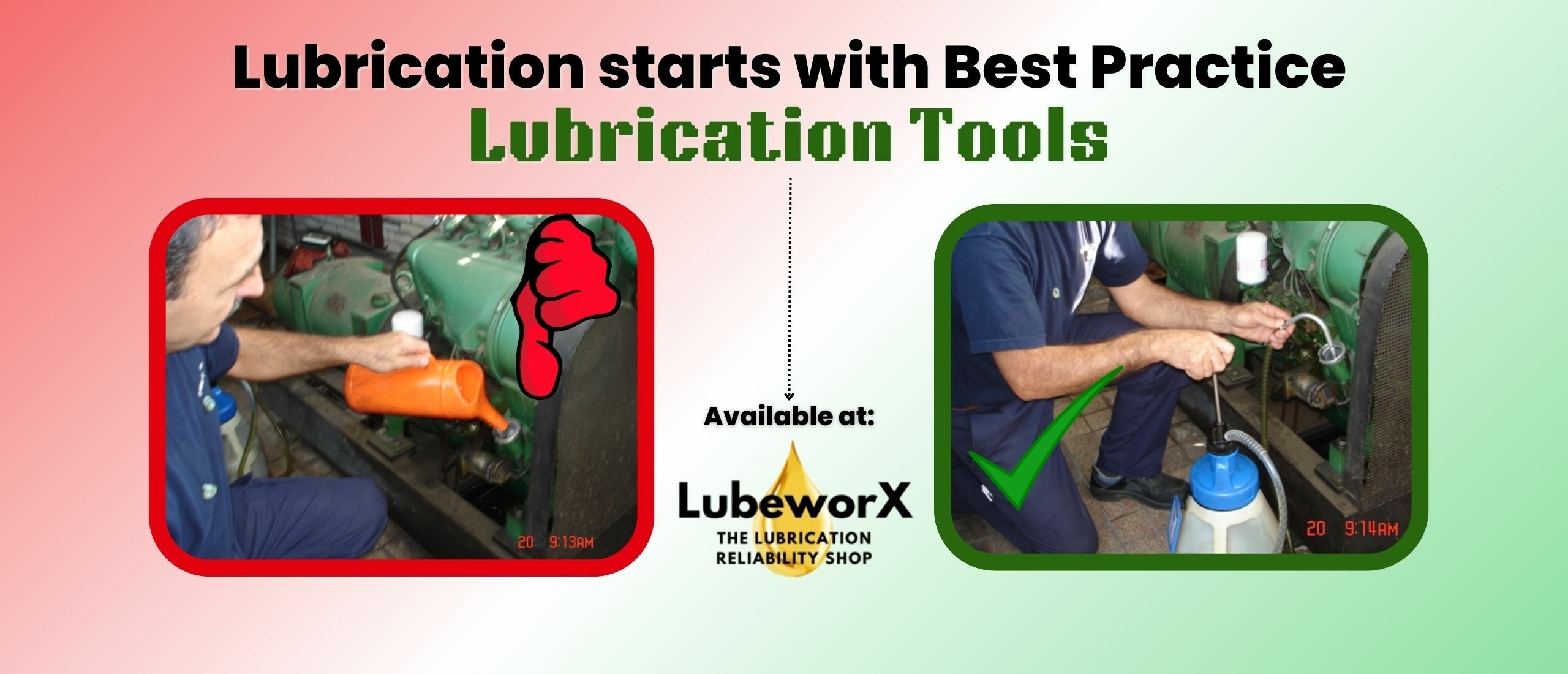
Six Lubrication Rights
Introduction
When it comes to maintaining and optimizing machinery, few elements are as vital as lubrication. Acting as an unseen hero, lubrication silently safeguards the seamless operation and longevity of our mechanical wonders. Yet, achieving optimal lubrication isn't just about pouring oil into the gears and hoping for the best. It's a precise science, a delicate balance between various factors that, when aligned correctly, can spell the difference between seamless productivity and costly breakdowns.

Optimal lubrication isn't just about pouring oil into the gears and hoping for the best
The Six Lubrication Rights Explained
A comprehensive guide to mastering the art and science of lubrication in machinery. From selecting the right type of lubricant to implementing a rigorous testing program, each "Right" plays a pivotal role in ensuring machinery operates at its peak efficiency while minimizing maintenance costs and downtime.

Join us as we delve into the intricacies of lubrication management, unraveling the mysteries behind each Right and uncovering practical insights that can revolutionize your approach to machinery maintenance. Whether you're a seasoned engineer or a novice enthusiast, this blog will equip you with the knowledge and tools needed to unleash the full potential of your machinery.
So, get ready to delve deep into the world of lubrication, uncovering the keys to excellence that will drive unmatched performance and reliability in machinery operations.
1. Right Type of Lubricant
First and foremost, it underscores the importance of matching the right lubricant to the unique needs of each machine or part.
Just like wearing the wrong shoes for a hike or using the wrong key for a lock, applying an unsuitable lubricant can result in subpar performance or even harm.
For instance, while an engine may demand a heat-resistant lubricant akin to wearing sturdy boots for a trek in scorching weather, a bicycle chain may suffice with a simple, lightweight lubricant, akin to wearing sneakers for a casual stroll.
 Lightweight lubricant - bikechain | lightweight sneakers - casual stroll
Lightweight lubricant - bikechain | lightweight sneakers - casual stroll
2. Right Quality Lubricant
Secondly, it is important to utilize lubricants of the Right quality. While opting for low-quality lubricants may appear cost-effective initially, they often result in increased wear and tear, reduced protection against friction and heat, and ultimately, diminished machine performance and lifespan.
Conversely, high-quality lubricants are specifically formulated to endure extreme conditions, safeguard machinery from deterioration, and prolong its operational life.
Choosing the right quality lubricant is an investment in machinery longevity and performance, safeguarding against wear, friction, and ensuring optimal operation.
3. Right Amount of Lubricant
Moreover, it stresses the significance of applying the Right amount of lubricant. Over-lubrication can lead to leaks, wastage of resources, and safety hazards, while under-lubrication may result in friction, overheating, and premature wear and tear.
Striking the right balance in lubrication ensures optimal performance, minimizes friction, and prevents unnecessary spills or mess.
4. Right Place
It is important to lubricate machinery at the Right place. Precision in lubrication is essential, as every machine has specific lubrication points crucial for its proper functioning. Neglecting these points can lead to excessive wear and tear or, in worst-case scenarios, catastrophic machine failure.
- Maximized Protection: Applying lubricant at the right place ensures that critical components receive adequate protection. Each machine has specific points that require lubrication to reduce friction and wear. Lubricating these areas correctly shields them from damage, prolonging their lifespan and maintaining optimal performance.
- Improved Efficiency: Lubricating machinery at the right place enhances its overall efficiency. By targeting the key friction points with precision, lubricant application reduces resistance and allows components to move smoothly. This promotes seamless operation, minimizes energy consumption, and maximizes productivity.
- Prevention of Damage: Neglecting to apply lubricant at the right place can lead to serious damage and operational issues. Without proper lubrication, components may experience excessive friction, heat buildup, and accelerated wear. Over time, this can result in component failure, costly repairs, and unplanned downtime.
5. Right Time
Additionally, timing lubrication appropriately is vital. It is a periodic process influenced by factors such as machine type, operating environment, and workload. Delaying or rushing this process can result in inadequate lubrication, ultimately leading to premature machine failure.
Some examples why lubes should be applied at the Right Time
- Prevention of Wear and Tear: Applying lubricants at the right time ensures that machine parts are adequately protected against friction. Timely lubrication forms a protective barrier, preventing excessive wear and tear on components, thus extending their lifespan.
- Optimal Performance: Lubrication at the right time ensures that machinery operates at its peak efficiency. Properly lubricated parts experience reduced friction, allowing them to move smoothly and perform their intended functions without hindrance or slowdowns.
- Cost Savings: Timely lubrication helps prevent costly repairs and replacements. By minimizing wear and tear on machinery parts, businesses can avoid unexpected breakdowns and downtime, leading to significant cost savings in maintenance and repair expenses.
- Enhanced Safety: Regular lubrication at the right intervals reduces the risk of equipment failure, which can pose safety hazards to workers. Ensuring that machinery is properly lubricated at scheduled intervals promotes a safer working environment and reduces the likelihood of accidents or injuries.
- Consistent Operation: Timely lubrication helps maintain consistent performance and reliability of machinery over time. By adhering to a regular lubrication schedule, businesses can ensure that their equipment operates predictably and consistently, meeting production targets and minimizing disruptions in operations.
6. Right Way
Lastly, it's necessary to implement a rigorous testing program for lubricants. Regular testing and analysis serve as proactive measures akin to health check-ups for machines.
By detecting potential issues early, such as contamination or incorrect lubricant usage, engineers can intervene promptly, thereby preventing costly breakdowns and extending machinery lifespan.
It's critical to adhere to the principles of the 6 Lubrication Rights in maximizing machinery efficiency, prolonging its lifespan, and minimizing maintenance costs.












